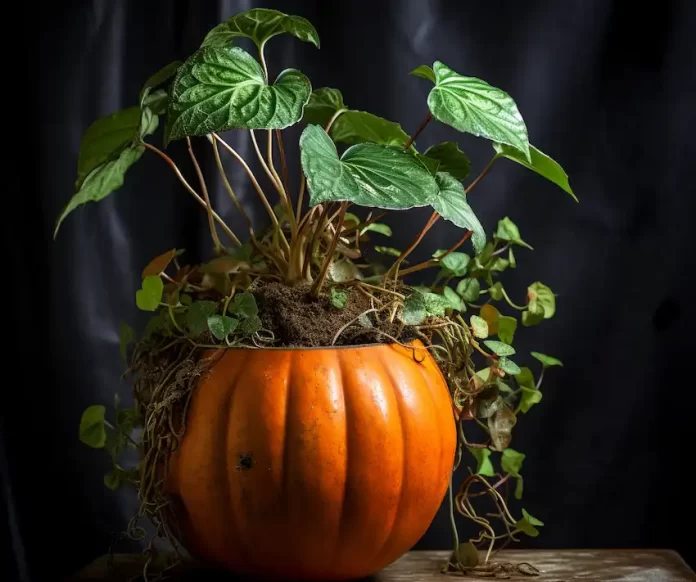Cultivating pumpkins in containers offers a delightful and fulfilling venture, enabling you to reap fresh pumpkins even within confined spaces. Below is a comprehensive guide to assist you in effectively nurturing pumpkins at home in containers.
Choosing the Suitable Container
Volume: Opt for a container with a minimum capacity of 15 gallons, providing ample room for the pumpkin plant’s roots to thrive. Depth: Ensure a depth of at least 18 inches to accommodate the extensive root system of pumpkin plants adequately. Drainage: Drill holes in the container’s bottom to facilitate proper drainage and prevent waterlogging.
Selecting the Appropriate Pumpkin Variety
Container-Friendly Varieties: Select compact or bush varieties such as ‘Small Sugar,’ ‘Baby Boo,’ or ‘Jack Be Little,’ tailored for container cultivation. Consider Space: Assess the available space and choose a variety compatible with the container’s size.
Soil and Planting
Soil Mix: Utilize a nutrient-rich, well-draining potting mix enriched with organic matter. Incorporate compost or aged manure to enhance soil fertility. Planting Seeds: Plant 2-3 pumpkin seeds approximately 1 inch deep in the container’s center. Upon sprouting, thin to retain the healthiest seedling. Spacing: If planting multiple seeds, space them at least 18-24 inches apart.
Watering and Sunlight
Watering: Maintain consistent soil moisture levels, avoiding waterlogging. Water deeply and allow the soil to partially dry between waterings. Sunlight: Position the container in a location receiving a minimum of 6-8 hours of sunlight daily to promote optimal growth.
Care and Maintenance
Support: Install a trellis or support structure adjacent to the container as the vines expand. Train the vines to climb the support, facilitating airflow and preventing rot. Fertilization: Apply a balanced, slow-release fertilizer or diluted liquid fertilizer every 2-3 weeks to supply essential nutrients. Pruning: Trim excessive foliage and smaller fruits to redirect the plant’s energy towards the primary pumpkin.
Pest and Disease Management
Pests: Regularly inspect for pests like aphids, squash bugs, or cucumber beetles. Employ organic insecticidal soap or neem oil for pest control. Diseases: Prevent powdery mildew by ensuring adequate airflow around the plant and utilizing fungicides if necessary.
Harvesting
Timeline: Pumpkins typically ripen in 75-100 days, depending on the variety. Maturity Indicators: Look for a uniform color, firm rind, and dried stem. A hollow sound when tapped indicates readiness. Harvesting: Use pruning shears to cut the pumpkin from the vine, leaving a few inches of stem intact.
Growing pumpkins in containers demands meticulous attention to soil quality, watering regimen, sunlight exposure, and pest mitigation. With proper care and diligence, you can relish the gratifying experience of harvesting home-grown pumpkins, even within limited space.
Keep in mind that gardening often involves experimentation, so embrace the process, and each endeavor will furnish valuable lessons for future success.
